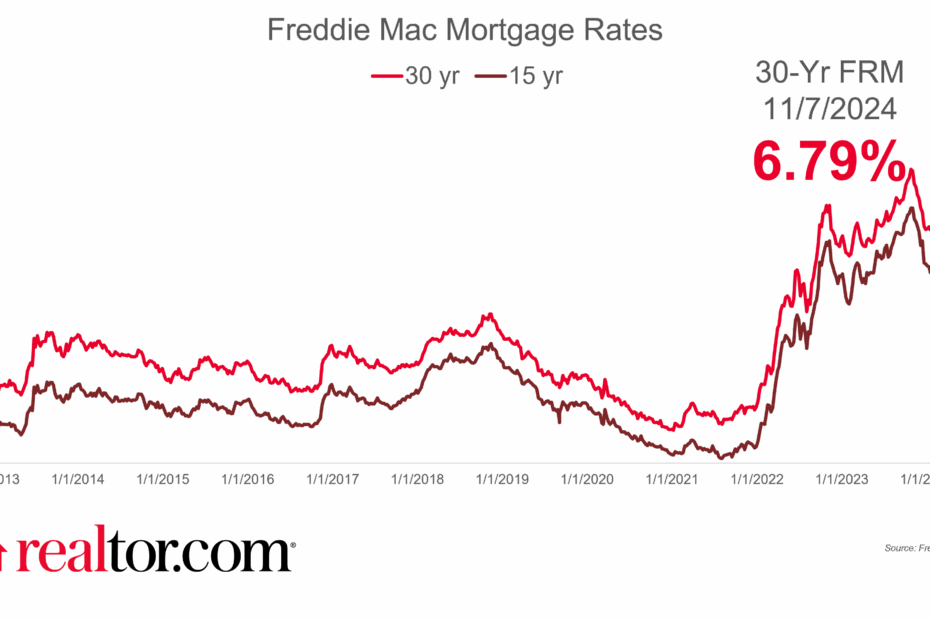Revolutionizing the Housing Market: Unprecedented Shifts and Game-Changing Updates Unveiled!
The mortgage lending industry is undergoing significant changes and facing unprecedented shifts that are revolutionizing the housing market. These changes are impacting mortgage rates, which play a crucial role in determining the affordability and accessibility of real estate for homebuyers and investors.
1. Current Trends in Mortgage Rates
Understanding the current trends in mortgage rates is essential for potential homebuyers and investors to make informed decisions. Mortgage rates are influenced by various factors, including economic conditions, inflation, monetary policy, and market demand. Here are the key trends in mortgage rates:
1.1. Historical Low Mortgage Rates
In recent years, mortgage rates have been at historically low levels. This trend began after the 2008 financial crisis when central banks worldwide implemented expansionary monetary policies to stimulate economic growth. Low mortgage rates have been a significant driver of the real estate market, attracting buyers and investors.
According to Freddie Mac, a leading mortgage lender, as of September 2021, the average 30-year fixed-rate mortgage stood at around 2.86%, significantly lower than the historical average. This low-rate environment has provided an opportunity for many individuals to enter the housing market and secure affordable financing.
1.2. Volatility and Fluctuations
Despite the overall trend of low mortgage rates, there has been considerable volatility and fluctuations in recent times. Mortgage rates are influenced by various economic indicators, such as GDP growth, inflation, and unemployment rates. Any significant changes in these indicators can lead to fluctuations in mortgage rates.
For example, the COVID-19 pandemic had a profound impact on mortgage rates. In early 2020, as the pandemic unfolded, mortgage rates plummeted to new lows due to economic uncertainties and the Federal Reserve’s intervention. However, as the economy showed signs of recovery and inflation concerns rose, mortgage rates started to rise again.
2. Impact on the Real Estate Market
The mortgage rates have a direct impact on the real estate market, influencing both homebuyers and investors. Here are the key impacts:
2.1. Home Affordability and Demand
Low mortgage rates increase home affordability by reducing the cost of borrowing. When mortgage rates are low, potential homebuyers can qualify for larger loan amounts with lower monthly payments. This affordability factor drives demand in the real estate market, as more individuals are encouraged to purchase homes.
However, when mortgage rates rise, it can reduce affordability and dampen demand. Higher mortgage rates mean higher monthly payments for borrowers, which can price some potential buyers out of the market. This shift in demand dynamics can lead to a slowdown in the real estate market.
2.2. Refinancing Activity
Mortgage rates also impact refinancing activity. When mortgage rates drop significantly, homeowners often choose to refinance their existing mortgages to take advantage of lower rates. Refinancing allows homeowners to reduce their monthly payments or shorten the loan term.
Low mortgage rates have driven a surge in refinancing activity in recent years. According to the Mortgage Bankers Association, refinancing applications reached their peak in 2020 as homeowners rushed to secure lower rates. This activity not only provides financial relief to homeowners but also stimulates the economy through increased consumer spending.
3. Recent Developments and Changes
In recent times, several developments and changes have emerged in the mortgage lending industry that potential homebuyers and investors should be aware of. These developments have the potential to shape the future of the mortgage and real estate sectors. Here are some notable ones:
3.1. Rising Mortgage Rates
One significant recent development is the rise in mortgage rates after a prolonged period of historic lows. As the global economy recovers from the impacts of the pandemic, inflation concerns have increased. In response, central banks and the Federal Reserve are considering tightening monetary policies, which can lead to higher mortgage rates.
Homebuyers and investors should closely monitor these rate increases as they can impact the affordability of homes and the overall demand in the real estate market. Higher mortgage rates may lead to a slowdown in price appreciation and a shift in market dynamics.
3.2. Introduction of Digitization
The mortgage lending industry is embracing digitization, leading to streamlined processes and enhanced accessibility. Many lenders now offer online mortgage applications, automated underwriting systems, and digital document submission. This digitization trend has made it easier and more convenient for borrowers to apply for mortgages.
Additionally, technology-driven platforms known as fintech companies are entering the mortgage lending space. These companies leverage data analytics, artificial intelligence, and machine learning to provide faster loan approvals and personalized mortgage solutions.
3.3. Evolving Mortgage Products
The mortgage industry is experiencing the emergence of new mortgage products and updates to existing ones. Lenders are introducing innovative products to cater to a diverse range of borrowers’ needs. For example, there has been an increase in adjustable-rate mortgages (ARMs) that offer lower initial interest rates but can adjust over time.
Furthermore, government-sponsored entities like Fannie Mae and Freddie Mac are working on new loan programs targeted at first-time homebuyers and low-income borrowers. These programs aim to increase homeownership rates by providing more accessible financing options.
4. Future Implications
The current trends in mortgage rates and the recent developments in the mortgage lending industry have significant implications for the future of the mortgage and real estate sectors. Here are some insights into how these trends might shape the future:
4.1. Mortgage Rate Volatility
Given the uncertainties in the global economy and potential inflationary pressures, mortgage rates are likely to experience continued volatility. Homebuyers and investors should stay informed about market developments and be prepared for potential fluctuations in rates.
4.2. Increased Digitization
The digitization of the mortgage lending industry is expected to continue, making the mortgage application and approval processes more efficient and accessible. Borrowers can expect a faster and more streamlined experience, with reduced paperwork and quicker loan decisions.
4.3. Expansion of Mortgage Products
The introduction of new mortgage products and loan programs will provide borrowers with more options tailored to their specific needs. This expansion is likely to increase accessibility to the housing market for underserved populations, stimulating demand and increasing homeownership rates.
4.4. Shifts in Real Estate Market Dynamics
The rise in mortgage rates can lead to a shift in real estate market dynamics. While it may slow down price appreciation, it can also result in a more balanced market, giving buyers more negotiating power. Investors should carefully analyze market conditions and adjust their strategies accordingly.
Conclusion
The mortgage lending industry is experiencing unprecedented shifts, primarily driven by changes in mortgage rates. Understanding the current trends in mortgage rates is crucial for potential homebuyers and investors to navigate the dynamic landscape of the real estate market.
Recent developments in the mortgage lending industry, such as rising mortgage rates, digitization, and evolving mortgage products, are shaping the future of the mortgage and real estate sectors. By staying informed and adapting to these changes, individuals can make informed decisions and seize opportunities in the ever-changing mortgage market.
Sources:









